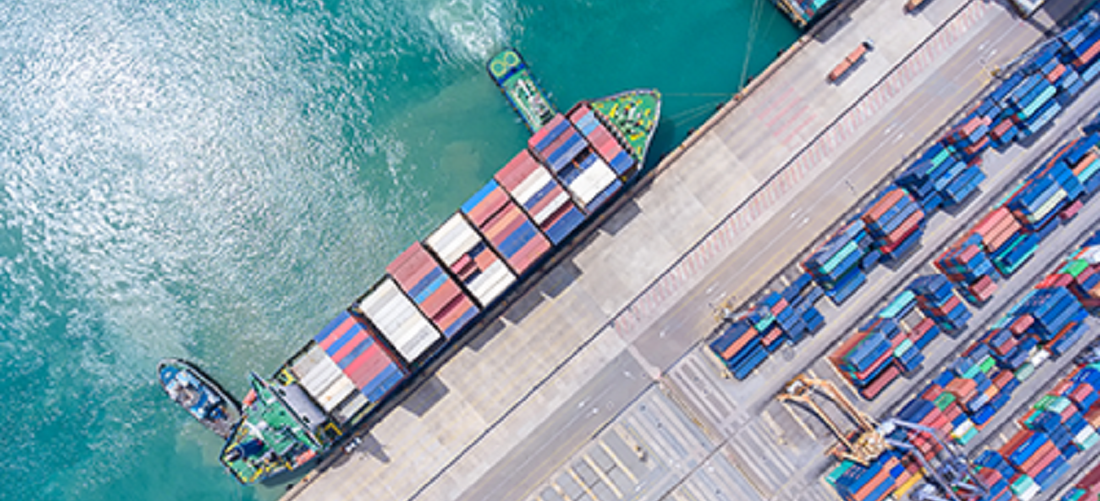
DataLiner: container market data indicates economic stability
Jun, 30, 2022 Posted by Gabriel MalheirosWeek 202226
Data recently released by DataLiner on the Brazilian container market throughput indicate that in the first five months of 2022, imports of unitizers by sea fell by 16.44% compared to the same period in 2021.
Compared to the period corresponding from January to May 2020, there was a growth of 3.96% in the arrival of containers. It is worth noting that imports hiked at the beginning of 2021 as a result of the process of recovering the volumes that stopped coming to the country in the previous year due to lockdowns and other problems caused by the Covid-19 pandemic.
See below the main tear-to-date trends in the volume of container imports in Brazil:
Brazilian container imports (Year-to-date) | Jan – May | 2019 – 2022 | TEUs
Source: DataLiner (click here to request a demo)
On a month-on-month basis, Brazil imported 192,572 TEUs in May, a decrease of 18.64% compared to May 2021, when the country received 236,717 TEUs. Check out the month-to-month comparison below:
Brazilian container imports (month-on-month) | Jan – May | 2019 – 2022 | TEUs
Source: DataLiner (click here to request a demo)
Exports via containers registered a smaller drop in the first five months of 2022 compared to the same period in 2021: -2.80%. However, comparing the period January to May 2022 with 2020, there was a growth of 6.54%, as can be seen in the following chart:
Brazilian container exports (Year-to-date) | Jan – May | 2019 – 2022 | TEUs
Source: DataLiner (click here to request a demo)
Conversely, in terms of comparing month to month, Brazil shipped 228,632 TEUs in May, a drop of 9.59% compared to May 2021. See more below:
Brazilian container exports (month-on-month) | Jan – May | 2019 – 2022 | TEUs
Source: DataLiner (click here to request a demo)
Plate (Paraguay, Uruguay and Argentina)
As for the container market in the Plate region (Paraguay, Uruguay and Argentina), imports fell by 3.92% in the first five months of 2022 compared to the same period in 2021. See more below:
Plate container imports (Year-to-date) | Jan – May | 2019 – 2022 | TEUs
Source: DataLiner (click here to request a demo)
In May, the Plate region imported 63,080 TEUs, a decrease of 20.33% compared to May 2021. Check it out below:
Plate container imports (month-on-month) | Jan – May | 2019 – 2022 | TEUs
Source: DataLiner (click here to request a demo)
Plate container exports fell by 6.41% from January to May 2022 compared to the same months in 2021. See more details in the chart below:
Plate container exports (YTD) | Jan – May | 2019 – 2022 | TEUs
Source: DataLiner (click here to request a demo)
Comparing May 2022 with May 2021, we see a 14.79% drop in shipments. See below:
Plate container exports (month-on-month) | Jan – May | 2019 – 2022 | TEUs
Source: DataLiner (click here to request a demo)
Future perspectives
According to a projection made on May 24 by the Department of Economic Research at Bradesco (DEPEC) in Brazil, the measuring of economic activity suggests that a similar economic pace will be kept throughout the first half of the year. Furthermore, FGV’s GDP monitor pointed to a growth of 0.3% in economic activity in April, compared to the previous month and seasonally adjusted. The economy advanced 3.6% in April year on year.
The indicators known so far suggest better industry performance for May and June, while trade will be boosted by extraordinary withdrawals from FGTS, Brazil’s national severance pay fund. Similarly, the job market has been buoyant, and the unemployment rate continues to decline. For these reasons, DEPEC believes GDP will grow around 0.8% in the second quarter of this year, losing pace only in the second half of the year and ending December with a high of 1.5%.
In the international market, the last week was taken by concerns due to higher interest rates being applied in important economies worldwide. After Fed President Jerome Powell’s speech to the US Senate, as well as remarks by other leaders, many began to fear the possibility of tight monetary policies leading the US into recession.
In a similar negative vein, inflation data from the United Kingdom and the European Union sustain that European central banks will soon raise interest rates as well. This synchronized movement may intensify the deacceleration of the global economy and negatively impact the price of commodities.
-
Meat
Jul, 07, 2021
0
Brazilian beef shipments fell 3.2% in the first half
-
Other Cargo
Apr, 07, 2022
0
EU sanction pressures global coal market
-
Vessel Calls
Jun, 03, 2020
0
Container vessel calls at Brazilian ports fell 5.41% YoY in last four weeks
-
Grains
Oct, 13, 2022
0
Argentine gov’t set to meet wheat sector amid concerns over crop


